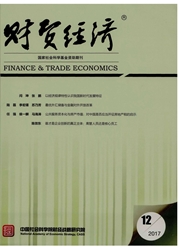

 中文摘要:
中文摘要:
本文以全国70个大中城市出让土地为研究对象,根据土地的性质将其分为两类,其中,招拍挂类土地对地方政府财政收益的贡献机制是通过“财政效应”,而协议类土地的贡献机制则是通过“引资效应”。空间计量实证分析表明,招拍挂类土地财政的互动行为是“朝顶互动”,互动策略是追求出让收入和价格的双增涨,并且以前者为主,这种表现在全国东、中、西部城市都趋于一致;而协议类土地财政的互动行为是“朝底互动”,互动策略是出于“引资”的压力不断压低出让价格,这种策略只存在于中部城市,东西部城市并没有采用类似的互动策略,可能与其区位禀赋以及区域面,临的竞争程度差异有关。本文的研究有利于进一步观察地方政府如何利用土地资源进行财政收益互动的行为,从而为中央政府对地方土地市场的调控提供一定的理论提示。
 英文摘要:
英文摘要:
The paper studies the spatial interaction of land transfer among 70 large and medium-sized cities of China and classifies land transfers into two types, i.e. bidding, auction and quotation of land use right as well as agreement of land use right, according to the nature of land use right. The former contributes to local revenues through "revenue effect," while the latter contributes to local revenues through "investment inflow effect. " Our spatial econometric analysis shows that the interaction strategy of bidding, auction and quotation of land use right is "race to the top," pursuing the rise in both revenue and price of land use right. What's more, the rise in revenue dominates the rise in price, which is prevalent among cities in eastern, middle and western China. However, the interaction strategy of agreement of land use right is "race to the bottom," lowering the price of land to attract more investment. This type of interaction strategy only exists among cities in central China, while cities in either eastern or western China do not adopt the similar strategy due to differences in local endowments and the degree of competition among these cities. This paper reveals how the local governments interact for land revenues in China and might provide some theoretical foundation for the central government to regulate the land market.
 同期刊论文项目
同期刊论文项目
 同项目期刊论文
同项目期刊论文
 期刊信息
期刊信息
